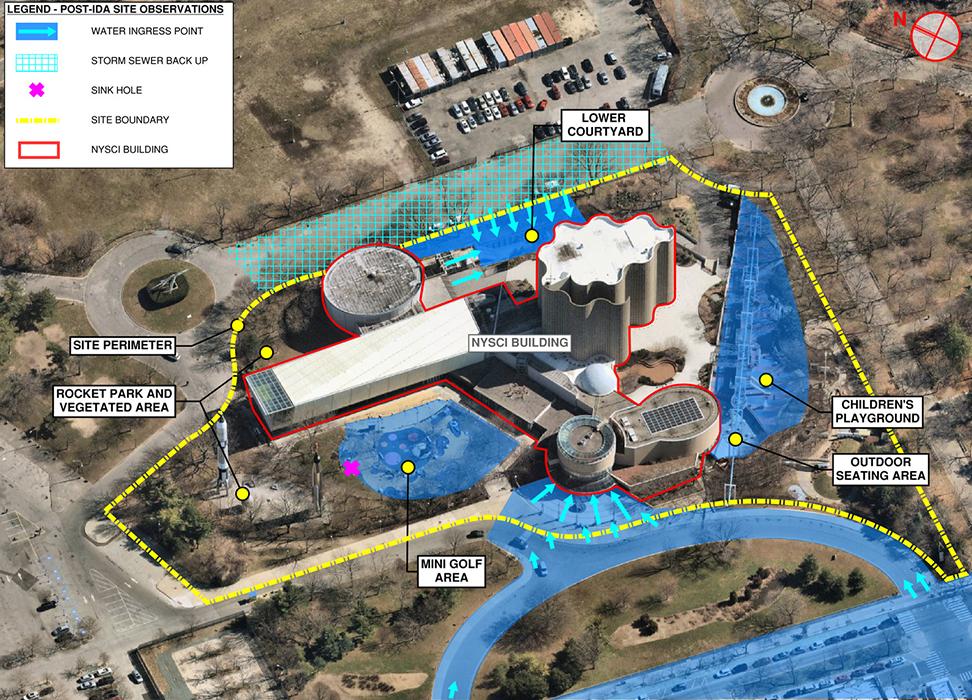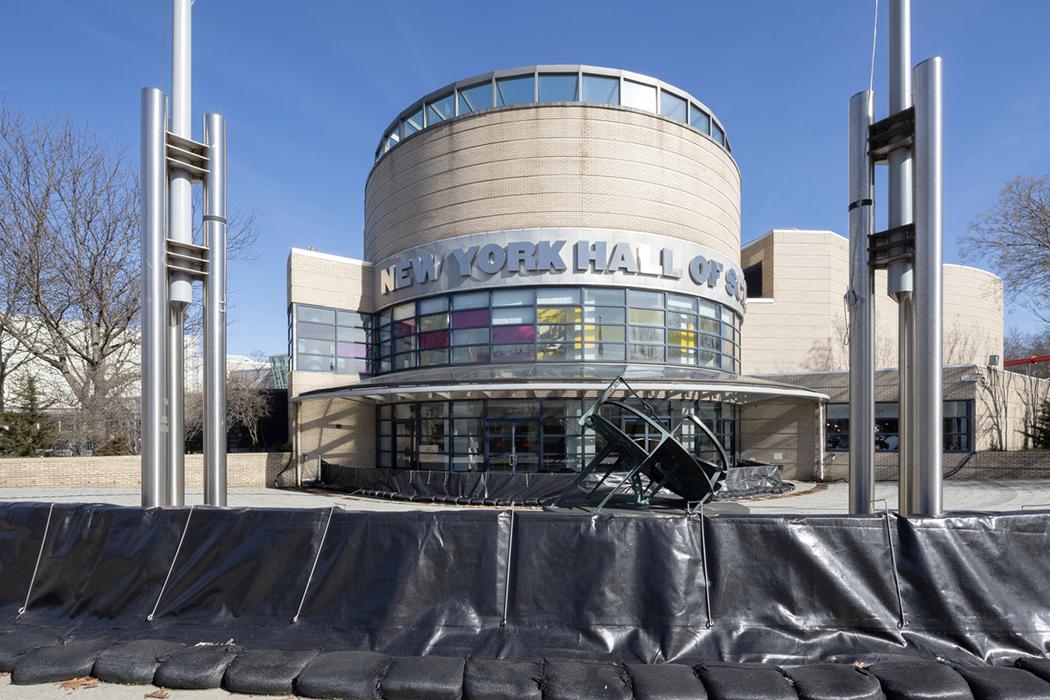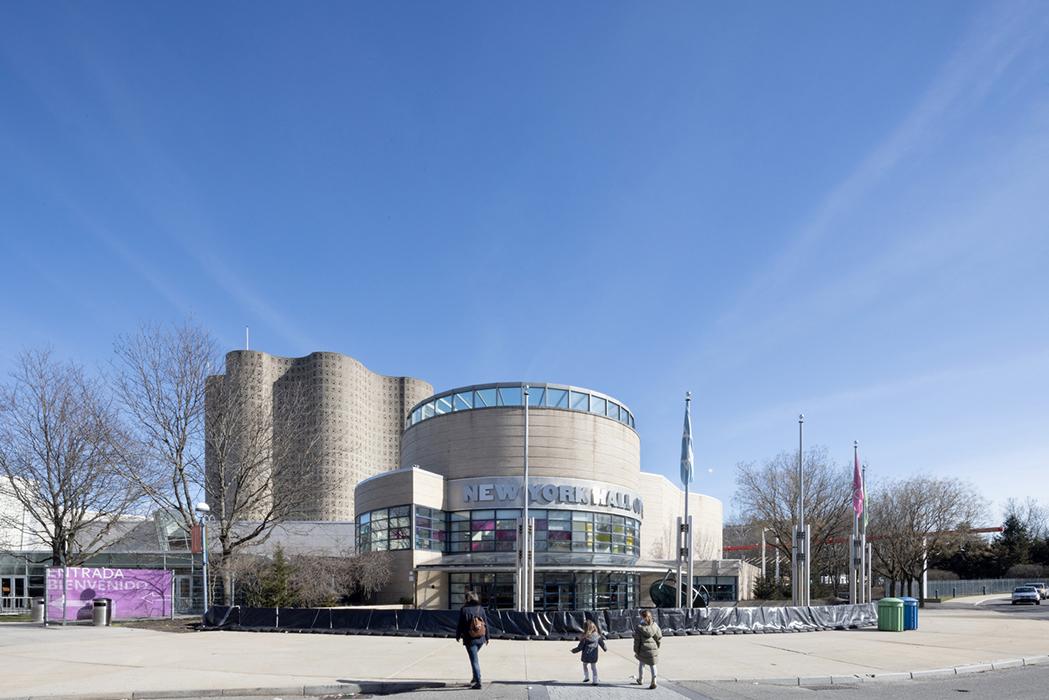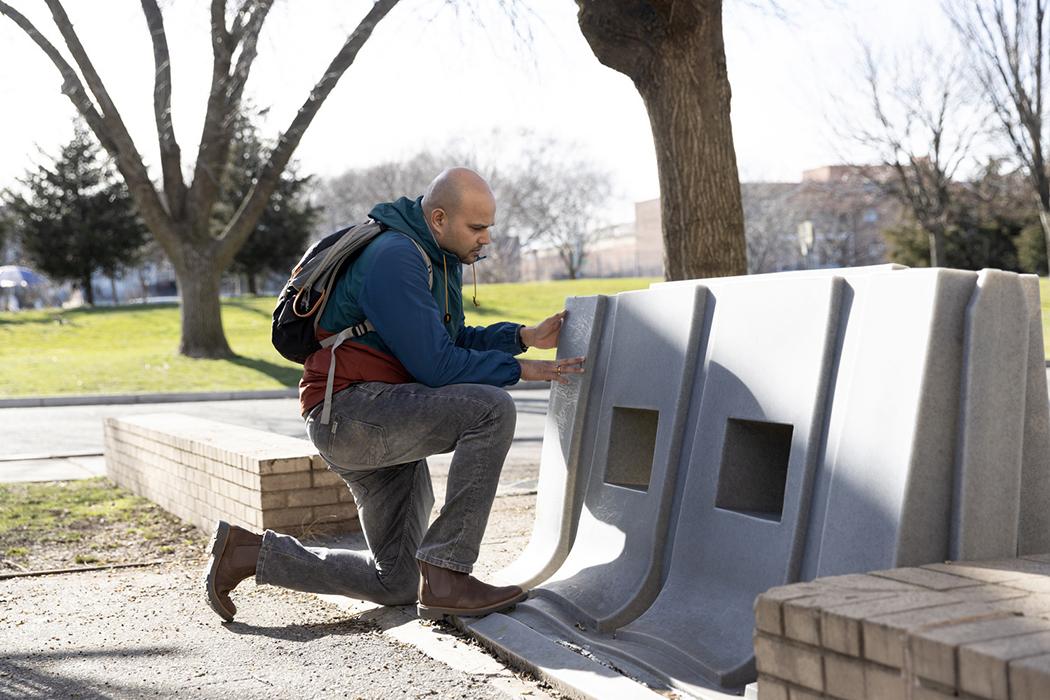New York Hall of Science, Climate Hazard Assessment Services
With the certainty of climate change facing the New York City area, a Queens museum plans for resilience.
Lead Contact

Project Details
overview
When Hurricane Ida struck the New York City area as a post-tropical cyclone, it overwhelmed the municipal stormwater system. Its impacts to the New York Hall of Science, a science museum located in Flushing Meadows-Corona Park in Queens, included damage to the interior and exterior of the property as well as inundation of lower levels of building, which contained several popular exhibits.
We performed a climate risk and resilience assessment to identify vulnerabilities of the building and site to extreme precipitation flooding and other climate-related hazards. Climate change is projected to increase extreme precipitation in the New York City area by the end of the century and exacerbate impacts of the hazards identified in this study.
highlights
- A preliminary comprehensive resilience strategy was developed to minimize the impact of current and future climate hazards on people, property, operations, revenue and the reputation of the building. Furthermore, the assessment identified resilience measures that can be implemented in the short, medium and long term to optimize feasibility and resources.
- One of the critical immediate short-term measures recommended removal of foreign materials (sediment, debris) from stormwater/sewer piping, manholes and catch basins to restore the system to maximum carrying capacity. This would help maximize the stormwater system capacity and reduce stormwater sheet flow into the building.
- A hydrological analysis was performed to assess the extents of the watershed contributing to the sheet flow entering the building. The facility was found to be at the low point of the Corona neighborhood.
- In order to combat and divert this sheet flow, a semi-permanent flood barrier system designed and installed by Floodproofing.com at identified vulnerable low points has since protected the facility from stormwater flooding.
Our Team








